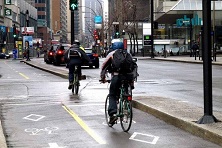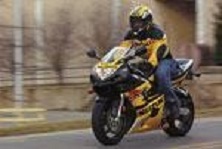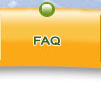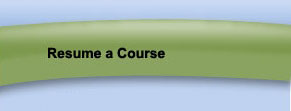|
page 11 of 11
Rights and Duties
Bicycle Safety
 Bicycles have a great impact in the overall transportation system in America. Cyclists must obey the same rules and regulations as other types of vehicles.
Bicycles have a great impact in the overall transportation system in America. Cyclists must obey the same rules and regulations as other types of vehicles.
Motorists who cause even a minor collision with a bicycle or pedestrian or who intentionally interfere with the movement of a bicycle may be charged with reckless driving. Penalties include a driver’s license suspension. Bicyclists may not intentionally interfere with the movement of a motor vehicle.
Enhanced Safeguards for Bicycle Riders
Drivers are now required to change into another available lane, when possible, to pass cyclists, building on the current requirement for drivers to give cyclists at least three feet of space when passing. The law also permits Class 3 e-bike riders to use approved bicycle paths and trails, bikeways, and bicycle lanes. In addition, starting on January 1, 2024, the law allows cyclists to cross an intersection when a walk sign is on.
What to Wear While Riding Your Bike
The most important thing you need to wear goes on your head - a helmet. A helmet will protect your head, and most importantly your brain, in case you fall off your bike. Note, all bicycle riders under the age of 18 are required to wear a helmet. Look on your helmet for a sticker that says the helmet meets safety standards set by the Consumer Product Safety Commission (CPSC). The CPSC is a part of the United States government that sets safety standards for lots of things people use; the bike helmet standards were introduced in 1999.
Riding Safely: The Rules of the Road
Here are some important things to know about keeping safe on the road, especially, when there’s traffic on your neighborhood’s busiest streets:
Always ride on the RIGHT-HAND side of the street in the same direction as cars do. Never ride against traffic.
Use bike lanes or designated bike routes wherever you can - never ride on the sidewalk!
Always stop and check for traffic in both directions when leaving your driveway, an alley, or a curb.
Watch traffic closely for turning cars, or cars leaving driveways.
Don’t ride too close to parked cars - doors can open suddenly!
Stop at all stop signs and obey signal lights just as cars do. Be careful at intersections.
Never change directions, or changes lanes, without first looking behind you, and using correct hand signals. That way everyone knows where you’re going.
Know your hand signals (below). Use your left arm for hand signals:
Left turn: look behind you, hold your arm straight out to the left, and ride forward slowly.
Right turn: look behind you, bend your elbow, holding your arm up in an "L" shape, and ride forward.
Stop: look behind you, bend your elbow, pointing your arm downward in an upside down "L" shape and come to a stop.
If you ride your bike in the evening, or when it’s getting dark, be sure to have reflectors on your bike and a battery-operated headlight.
Motorcycle Safety
 Motorcyclists have the same rights and the same responsibilities as other drivers. However, there are special situations and conditions we all need to be aware of so we can safely share the road with them. Make a note of them:
Motorcycle operators have the right to use a complete traffic lane.
Because of their smaller size, motorcycles are less visible and may appear to be farther away than they really are.
It is difficult for other drivers to judge how fast a motorcycle is going. Motorcycles may be forced from their position on the road by strong winds or a rough road surface.
Turn signals are not self-canceling on most motorcycles. Before you make a lane change or turn that depends on what a motorcycle’s path is, be sure you know what a motorcyclist is doing.
Watch for clues, such as operators or passengers turning their heads to look behind, or operators beginning to lean or tilt their motorcycles.
If you are coming up behind a motorcycle, slow down sooner than you would for another vehicle. Leave plenty of space.
Mopeds must be at least 150cc to drive on a freeway in California.
Motorcyclists have the same rights and the same responsibilities as other drivers. However, there are special situations and conditions we all need to be aware of so we can safely share the road with them. Make a note of them:
Motorcycle operators have the right to use a complete traffic lane.
Because of their smaller size, motorcycles are less visible and may appear to be farther away than they really are.
It is difficult for other drivers to judge how fast a motorcycle is going. Motorcycles may be forced from their position on the road by strong winds or a rough road surface.
Turn signals are not self-canceling on most motorcycles. Before you make a lane change or turn that depends on what a motorcycle’s path is, be sure you know what a motorcyclist is doing.
Watch for clues, such as operators or passengers turning their heads to look behind, or operators beginning to lean or tilt their motorcycles.
If you are coming up behind a motorcycle, slow down sooner than you would for another vehicle. Leave plenty of space.
Mopeds must be at least 150cc to drive on a freeway in California.
Motorcycle Statistics
Motorcycles are more likely to be involved in a fatal collision with a fixed object than are other vehicles. Most causes of motorcycle crashes happen due to lack of basic riding skills, failure to use defensive driving techniques, and failure to follow the posted speed limit. According to National Highway Traffic Safety Administration (NHTSA), per vehicle mile traveled, motorcyclist fatalities occurred nearly 29 times more frequently than passenger car occupant fatalities in traffic crashes.
Motorcycle Safety Checklist
If you are a motorcycle rider, the first step towards safety is obeying traffic rules. A combination of abiding by basic traffic rules, wearing proper attire, and refraining from drinking and riding will prevent unnecessary injury or a collision. Also, protecting oneself is very important. A motorcycle rider should be protected from head-to-toe. Make sure, you are wearing appropriate clothing, gloves, and footwear before riding a motorcycle.
The helmet is one single important element when it comes to protecting oneself. A driver and any passenger MUST wear a safety helmet when riding on a motorcycle, motor-driven cycle, or motorized bicycle.
When choosing a helmet, make sure it is equipped with a face shield to protect the rider’s eyes. According to U.S. Department of Transportation Fact Sheet, helmets are estimated to be 29 percent effective in preventing fatal injuries to motorcyclists and 67 percent effective in preventing brain injuries.
In addition to the pre-ride inspection, you should know how to do minor maintenance and service on your motorcycle, especially important on long rides and trips. Be sure to read your owner’s manual and stick to the following guidelines:
When you brake, use both brakes together. Generally speaking, when conditions are good, the front brakes account for as much as 2/3 of the bike’s stopping power. How much brake pressure to use depends on your abilities, you bike’s capabilities and the environment.
Slow down before going into a curve. Look through the curve and gently accelerate as you enter and drive through the curve. This gentle acceleration creates stability but cannot be accomplished without the proper braking prior to entering the curve.
Mud, sand, water and other foreign debris on the road take special handling. Before reaching a slippery surface, slow down and avoid directional or speed changes as you ride through the hazard.
Remember that the first few minutes of a rain storm are the most dangerous as the water mixes with the oil and fluids on the roadway. Avoid riding during this time, if possible. If you must ride, try to ride in the tracks of the other vehicles in front of you as they force away the water and oils.
Always plan ahead - you never know what kind of problems may be coming up. Know what you’ll have to do if you suddenly skid, have a blowout or loose clutch or throttle control.
|








